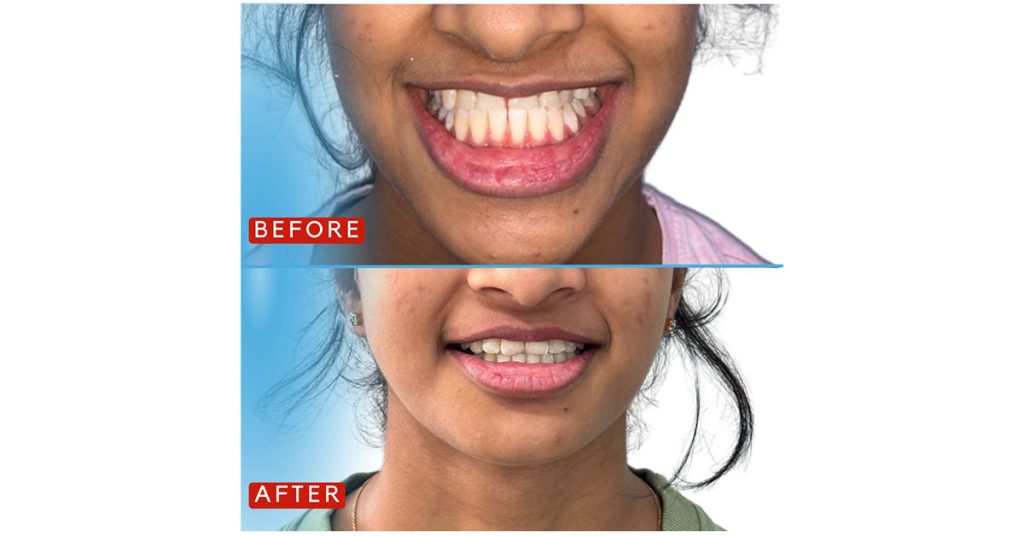How Class III Malocclusion Affects Speech, Chewing, and Confidence
Blogs How Class III Malocclusion Affects Speech, Chewing, and Confidence Introduction. A beautiful smile is more than just an aesthetic element; it represents a balance between your teeth and jaws and how well they are spaced and aligned. When these are misaligned, it does not only affect your smile. Class III malocclusion, or underbite, is when your lower jaw extends beyond your upper jaw. If untreated, this may cause issues with chewing, speaking, or lack of self-confidence. In this blog, we will explore how Class III malocclusion can impact your daily life and how orthodontic treatment can help restore quality and self-esteem. Table of Contents What Is Class III Malocclusion? How It Affects Speech Impact on Chewing and Digestion The Confidence Connection Treatment Options When to See an Orthodontist Conclusion FAQs What Is Class III Malocclusion? Class III malocclusion, or underbite, is characterized by the lower teeth and jaw being positioned further forward than the upper teeth. Research suggests it can be caused by genetics, early childhood habits or inappropriate growth of the jaw. Some common signs of class III malocclusion are: Lower jaw protruding outward Difficulty in closing the lips Uneven facial profile Speech or chewing problems. How It Affects Speech Speech depends heavily on proper alignment between the teeth, tongue, and lips.When there is an underbite, they can: Make it more difficult to produce sounds such as “s,” “f,” “v,” “th,” and “z” Cause a lisp or unclear speech sound production Result in air escaping during speech production Children with Class III malocclusion often struggle with producing certain speech sounds, which can affect both communication in the classroom or with friends, as well as their confidence. Early orthodontic treatment can be helpful in correcting the alignment and impact clarity of speech. Impact on Chewing and Digestion Successful chewing is necessary for proper digestion. With a Class III malocclusion: The teeth don’t meet properly, It can make it difficult to bite and grind food. People may also experience strain or discomfort in the jaw while a person is chewing. Poorly chewed food can contribute to digestive problems. In addition, over time, uneven pressure can lead to temporomandibular joint (TMJ) discomfort. In any case, fixing the bite alignment ultimately enhances comfort and will provide long-term oral and digestive health benefits. The Confidence Connection A noticeable underbite can impact an individual’s self-image. Many become self-conscious about their smile, especially in professional or social situations. Some may avoid smiling when taking photos or speaking in public due to perceived judgment. Treatments for malocclusion, through orthodontics, enhance facial profile and symmetry. Thus, treat underbites may result in the following: Enhancement of facial appearance Improved confidence Encourage better self-expression Treatment Option We treat Class III dental cases without Surgery in Kerala. That treatment procedure is MSE (Maxillary Skeletal Expander) – Widening the Upper Jaw The MSE appliance is a type of palatal expander that is directly anchored to the bone through micro implants (mini-screws). Unlike the traditional expanders that rely only on teeth, the MSE makes use of forces that are acting directly on the maxillary bone to produce true skeletal expansion. This allows for a width increase of the upper jaw, allowing for more space and creating a balanced relationship between the upper jaw and lower jaw. Pulling the Upper Jaw Forward – Two Main Options After expansion, the upper jaw can be pulled forward to correct the underbite: 1. Face Mask Therapy A face mask appliance is worn externally. Elastics will be connected between the face mask and the MSE appliance inside the mouth. The elastics are connected to the face mask and MSE in such a way that the elastics pull the upper jaw forward stimulating it to grow forward. 2. Micro Implant-Assisted Elastics (no External Face Mask) If the patient would prefer to have a less conspicuous method, the orthodontist can place micro implants in the lower jaw. Elastics will then be connected between the lower jaw micro implants and the MSE in the upper jaw. This set up will accomplish a similar forward pulling of the upper jaw, but would not have an external face mask attached. An orthodontic examination can determine the best plan for each patient’s needs. When to See an Orthodontist You should see an orthodontist if you: – Have difficulty biting or chewing – Have an uneven jaw or a facial imbalance – Have trouble with speech – Experience pain or clicking sounds when moving your jaw around. Getting an early diagnosis and orthodontic treatment in Kerala (especially in children) is important because this growth could have future negative results if not corrected as quickly as possible. Restore Your Smile & Confidence Today! Book Now Conclusion Class III malocclusion might feel cosmetic, but it affects speech, chewing, and self-esteem. Today, challenges like these can be effectively resolved through orthodontic treatment. Non surgical treatment for class 3 dental cases is the best option for this. This underbite treatment without surgery in Kochi can improve function, enhance appearance, and overall quality of life when dealt with early on. Frequently Asked Questions Can Class III malocclusion naturally correct itself over time? In general, the answer is no. Even though mild cases might seem to be less pronounced with the child’s growth, still the proper treatment is necessary for the correction to be permanent. Can an underbite be corrected non-surgically? Definitely, Advanced Orthodontics has non-surgical methods for underbite treatment that are very effective. What are the consequences of not treating Class III malocclusion? Eventually, it can cause chronic pain in the jaw, difficulty speaking, wearing out of the teeth, and the person losing their self-esteem, and all these problems will be experienced over a long period.
How Class III Malocclusion Affects Speech, Chewing, and Confidence Read More »


